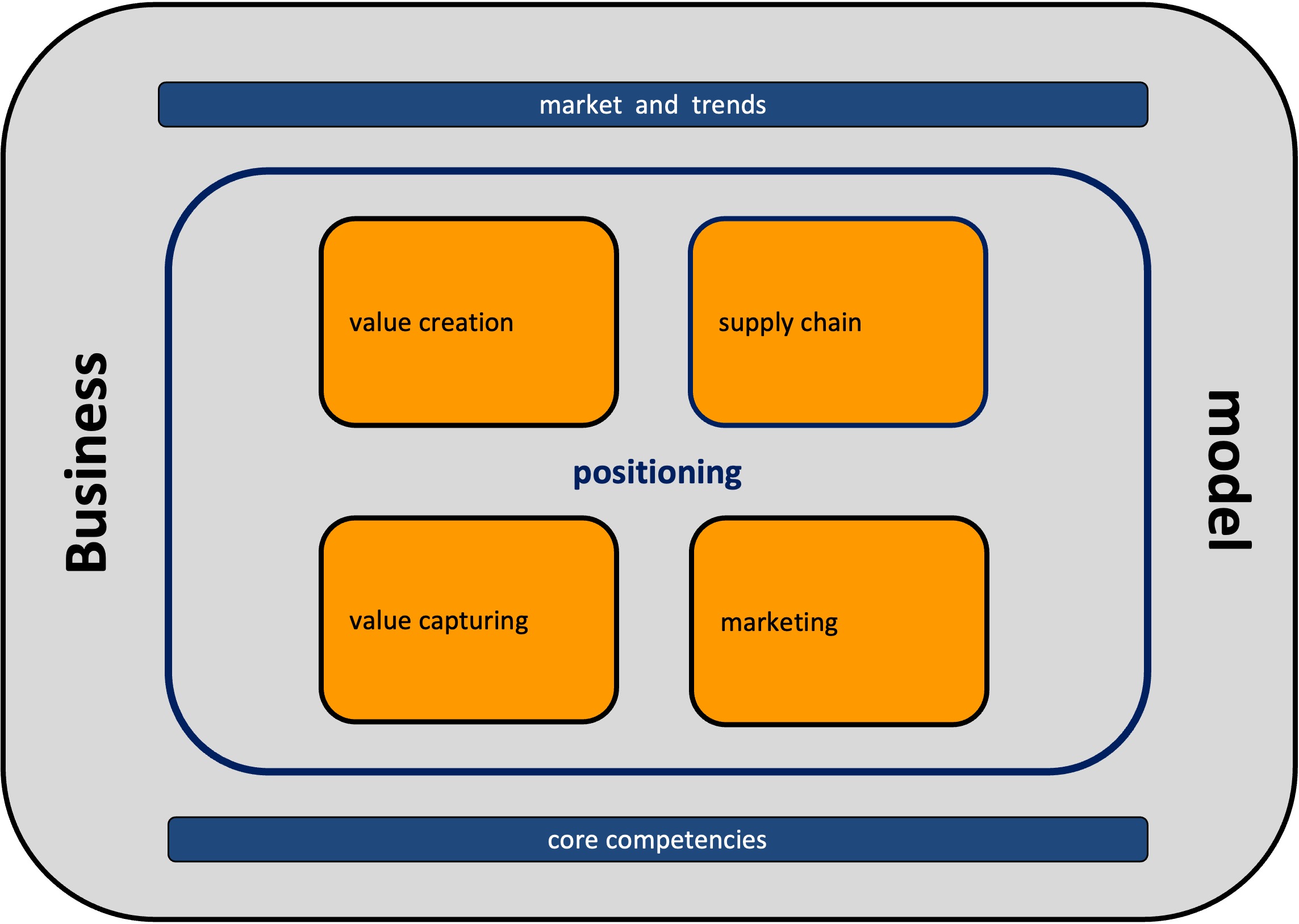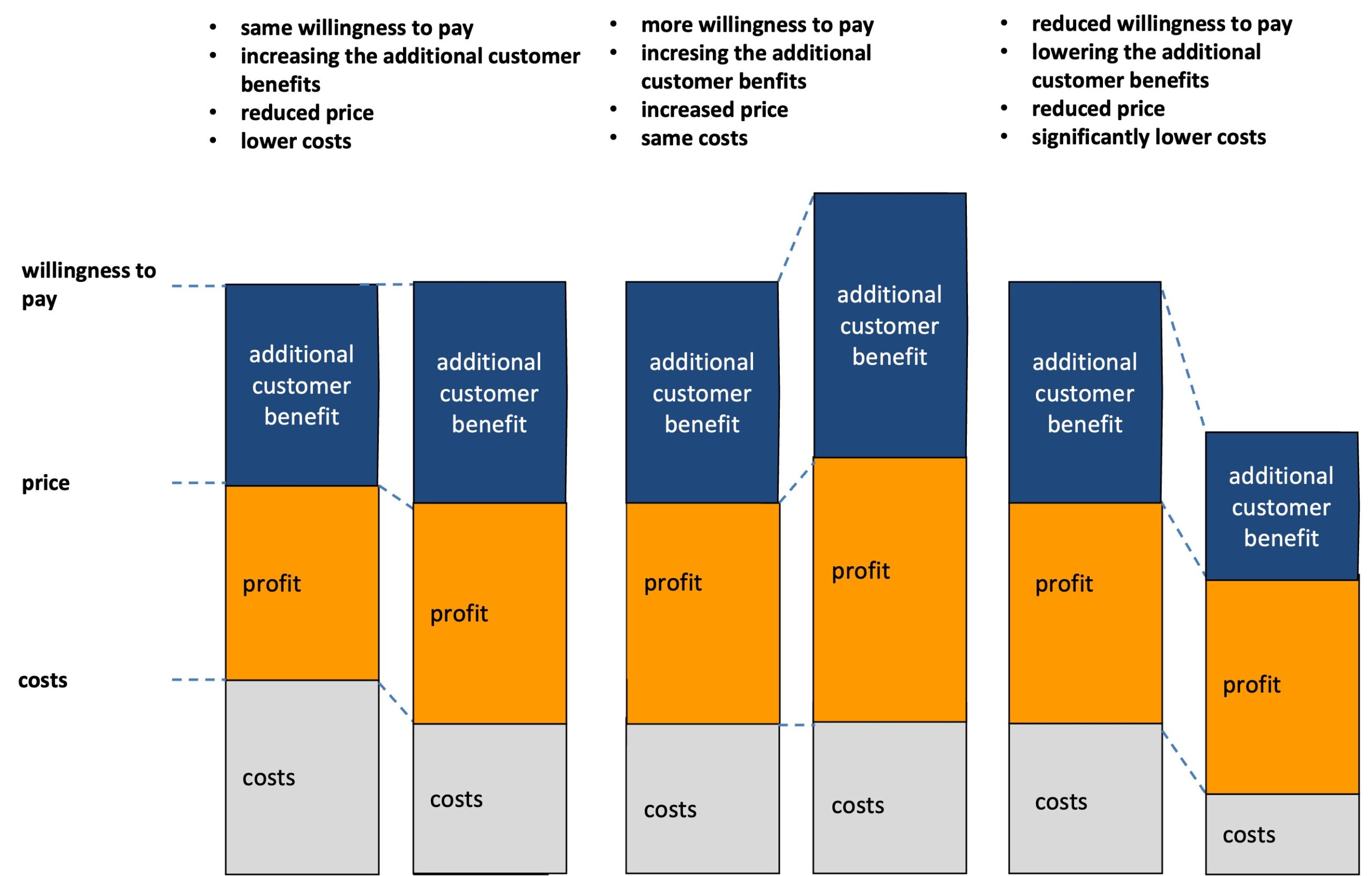In many companies, executives complain that they are under enormous cost pressure from their competitors and therefore have little scope for new things. The customer only buys for the best price and their own products are easily interchangeable with those of their competitors. A logical consequence of this is a tough cost reduction in the companies in order to be competitive.
But there is another way, as successful companies such as Apple with the iPhone or Nestle with Nespresso prove. But what are these companies doing differently? Right! They don’t trudge down well-trodden paths, but try new things. One way to stand out from your competitors on the market is not just to launch new products on your own, but also to change the entire business model for the new products and adapt to the market, market trends, customer requirements and your own core competencies to adjust. So it’s about positioning your own product on the market in such a way that it creates an unmistakable appearance and a unique business model that is difficult for competitors on the market to imitate or copy. You should therefore first think about the following questions:

Business model innovation – questions you should ask yourself!
When positioning your own company or product, it is important to clearly describe which customer needs the product is aimed at or which social trend the product follows. Trends may give rise to new customer needs that did not exist before, and these need to be identified and addressed. It is important to stand out from the competition through your appearance and appearance on the market in order to become unmistakable for the customer.
Your new product should now have a product logic that fits the positioning on the market. An (additional) customer benefit must be clearly recognizable in order to create added value for the customer and thus generate an incentive to buy. It is not only important to integrate features into the product, but also to pay attention to the design and usability, which should appeal to the right groups of buyers.
According to which value creation logic should the product be manufactured? Which (core) competencies do you already have in-house, which ones do you need additionally? In which value creation steps do you want to invest, in which do you want to outsource and rely on partners, suppliers and customers? How do you strategically set up your value chain to secure your business, which parts of the value chain contain the most income compared to the effort?
According to which marketing logic do you want to win customers, how do you want to retain them. Which marketing and sales channels do you want to use? Do they match your positioning and your product?
Ultimately, they must determine the revenue logic and assess which mechanisms can be used to earn sustainable money with their business model! After all, that is the purpose of your company!

Business model innovation – How can you design your business model individually and uniquely
The goal is to find ways to increase profits (and not just sales) with their products in order to
- increase the willingness of their customers to pay money for their product
- increase customer value
- to reduce costs
Below are 3 variants shown how the profit can be increased. Ideally, they set up or adapt their business model in such a way that their costs are reduced, the additional customer benefit increases and the customer is willing to pay more for their product.

Business model innovation – 3 ways to increase profits
You will ask yourself how this is supposed to work? To do this, they have to leave the well-trodden paths of their industry and break new ground. Some approaches to finding these new ways are for example:
- Blue Ocean Strategy
- Kano model
- Exploit your core competencies
- change the rules of the market game
